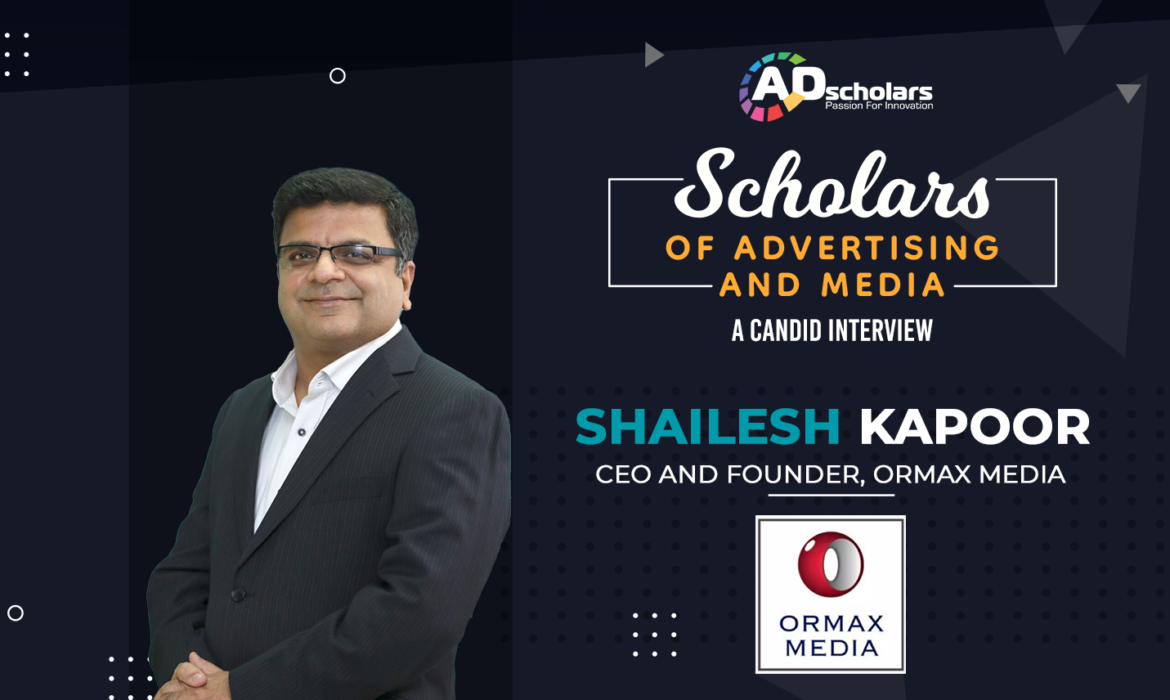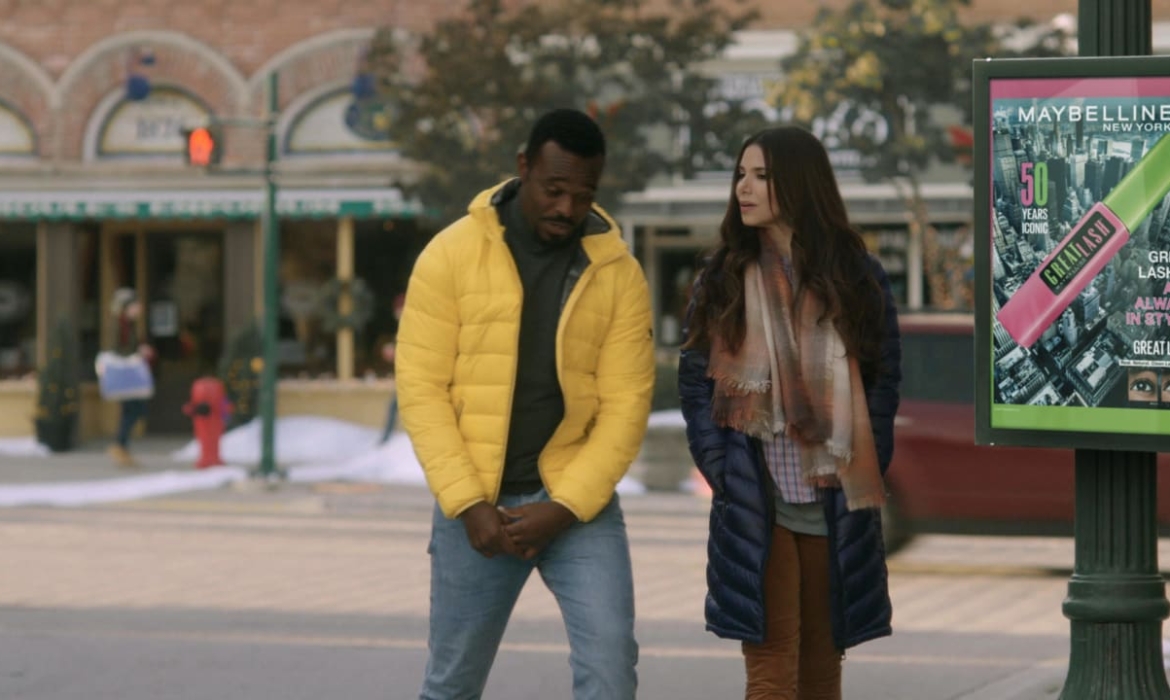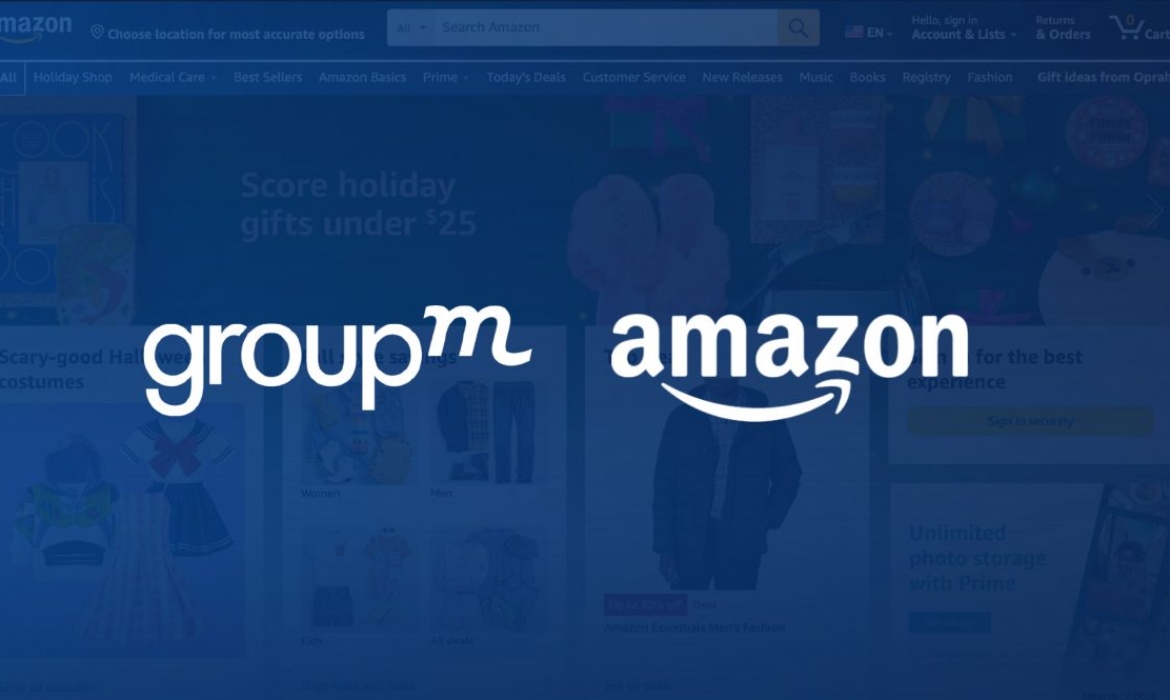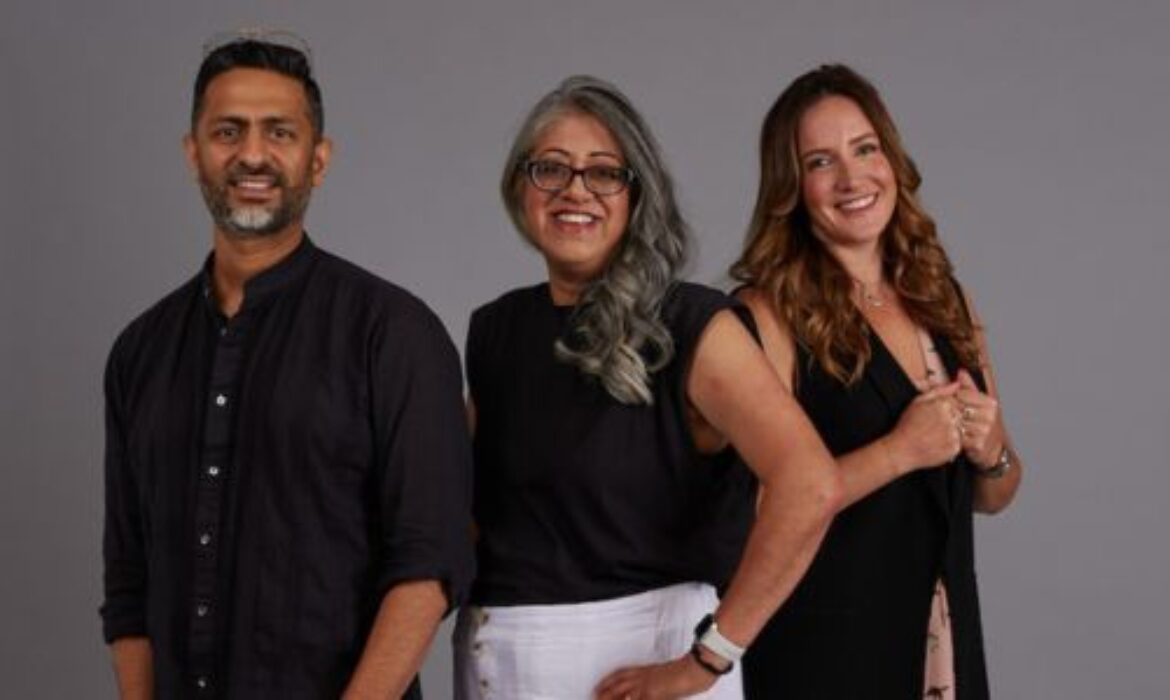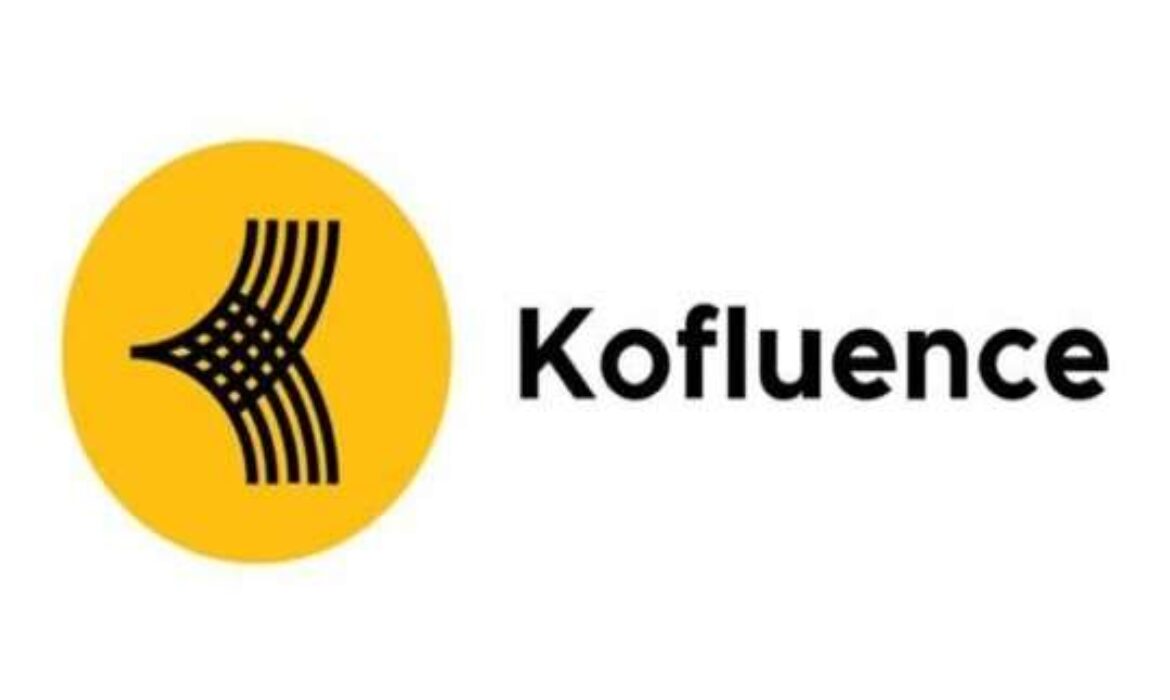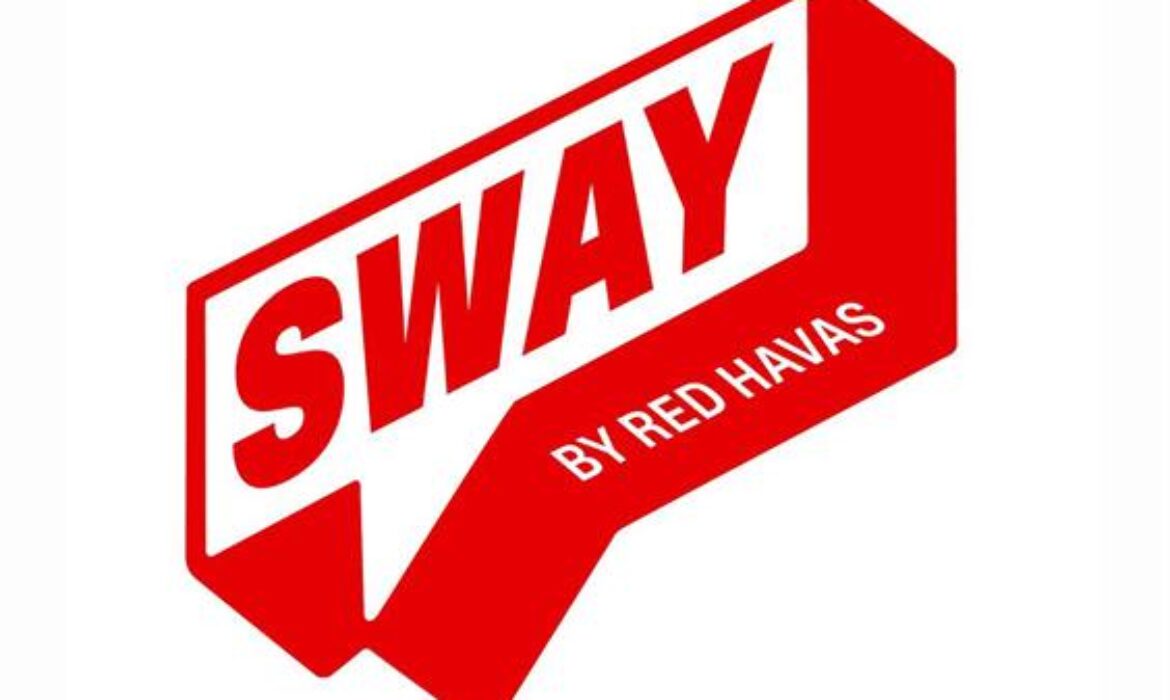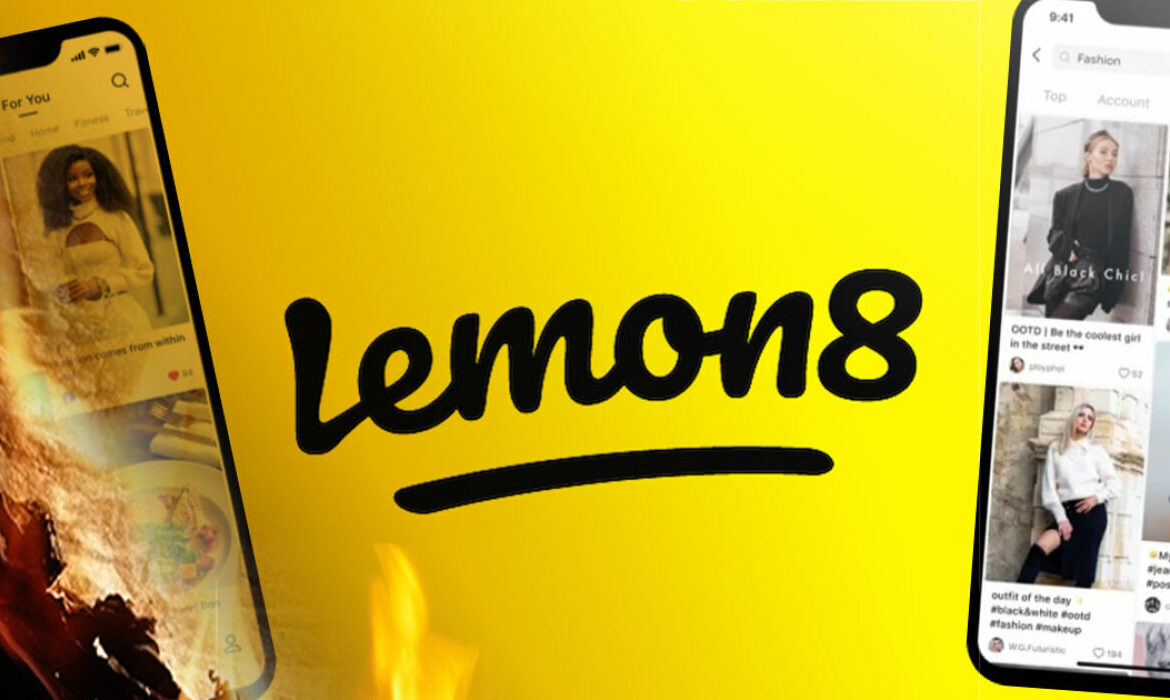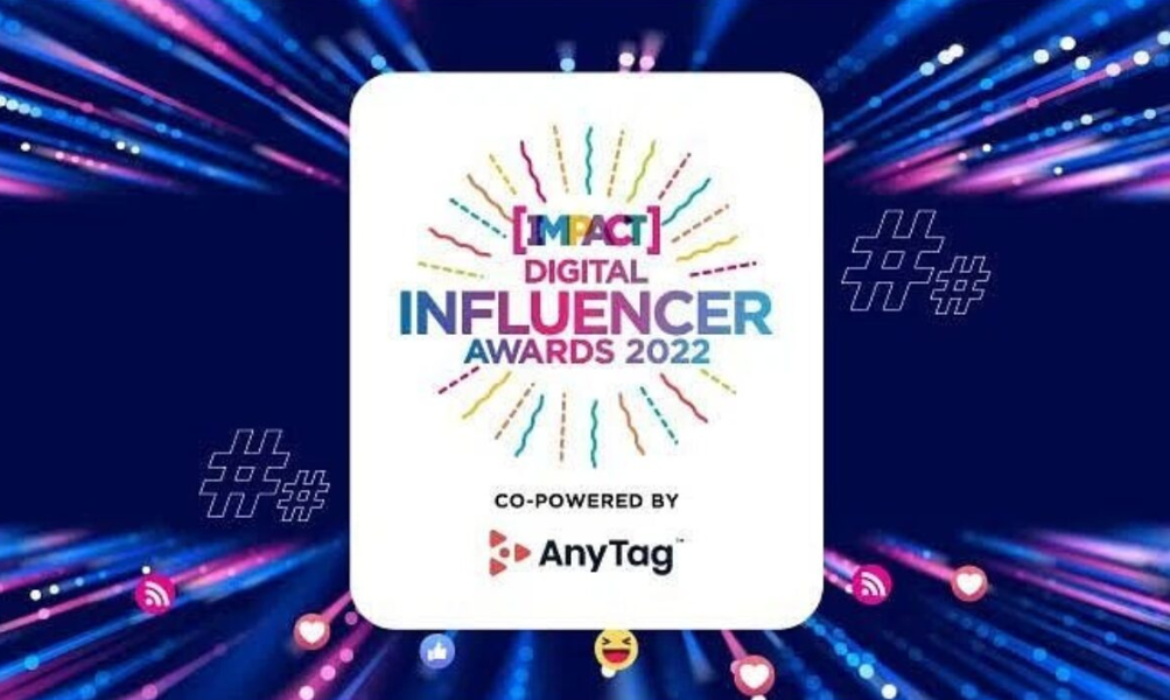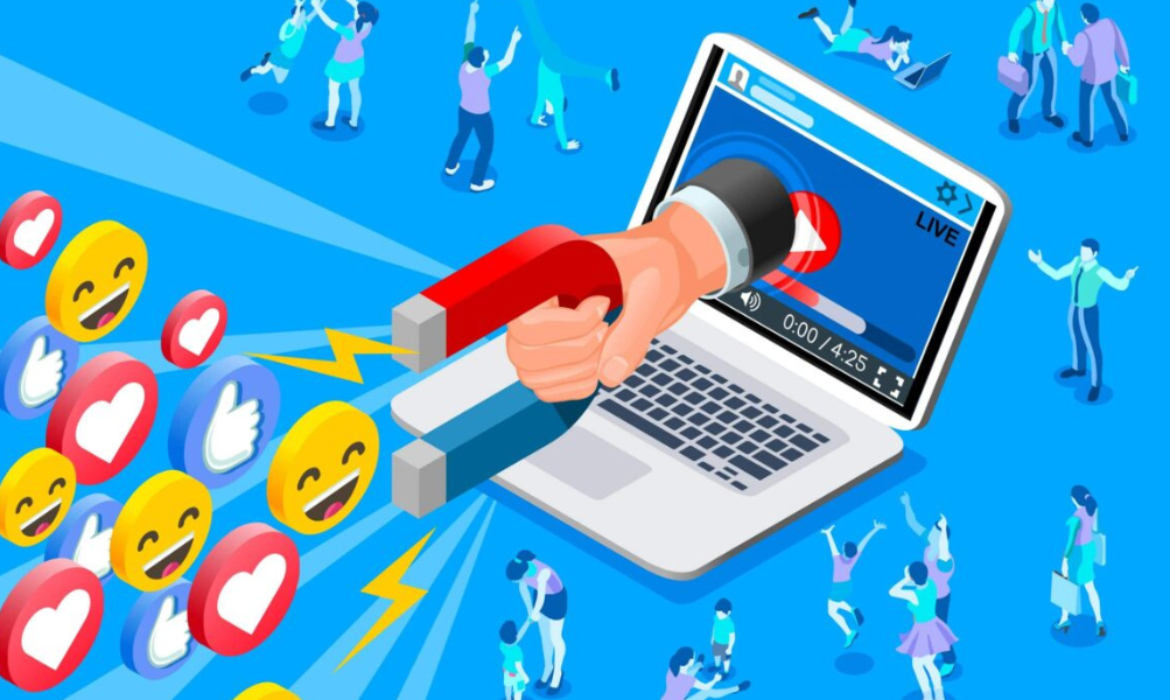Decoding Media Evolution with Shailesh Kapoor of Ormax Media
Shailesh Kapoor, CEO of Ormax Media, brings two decades of expertise to the Indian media industry. In this interview, he discusses the industry’s evolution, emphasizing the role of audience data and analytics at Ormax Media.
He sheds light on successful marketing strategies and the impact of influencer marketing in India. Discover how his insights and Ormax Media’s innovation collectively shape the industry, offering consumer-centric solutions and steering the future of media.
Having worked in media, TV, and marketing for more than two and a half decades, can you share your insights and your experience over the years?
The Indian media industry was in a fairly nascent stage when I started working in 1999. Over the last 25 years, there has been significant growth, especially with the digital medium coming in over the last decade. This growth has also attracted global players to India, bringing in best practices and processes. Yet, the Indian entertainment industry remains unique, relying equally on its chaotic energy and remaining instinct-led in large parts. One of our biggest challenges at Ormax Media has been to educate the industry about the value of audience data and analytics for more informed business decision-making. This remains a work in progress, especially in the South markets, where entertainment businesses are run in a more traditional way.
Viewership habits have changed amongst the Indian audience over the years. As a seasoned expert who has witnessed the evolution first-hand, can you shed some light on today’s viewership behavior?
Each medium has its unique role in the life of the viewer, and the viewing behavior of that medium reflects that. For example, television is the family medium, allowing families to spend quality time together every night—an essential need even more pronounced in today’s digital age. Despite the decline in appointment viewing, which was once crucial for television, there’s a noticeable shift amidst shorter attention spans. Surprisingly, the decrease in appointment viewing hasn’t resulted in increased channel flipping, as viewers prefer sticking to familiar shows and channels. In this evolving scenario, the Holy Grail of television has shifted from appointment to destination, emphasizing the channel’s significance over specific time slots in the competition for viewership share.
OTT is a medium for solo consumption or with those of the same group (spouse/siblings). Hence, it’s a more personal and intimate medium. Movie-going is an outdoor activity, equally about the social and communal experience as it is about the content itself. With the advent of digital media and the manifold increase in media choices available to the audience, including social media, viewing behavior is highly distracted. Anything that cannot hold the attention of the viewer for a few minutes will be rejected.

Social media and digital media have become increasingly popular, but they have also brought with them the rise of fake news and misinformation. What are your thoughts on this? Has this shift from traditional to digital been the primary cause of declining news credibility? If so, how can we combat it?
A lot of digitally savvy audiences still use print and television to ‘verify’ the news they see on digital/social media. That is the nature of online news: It will be high on immediacy but suspect on credibility. Building a credible news platform digitally requires one to build a strong brand, and this is where legacy brands, ranging from TOI to Jagran to BBC to Aaj Tak, have an advantage. One of the reasons TV news and print medium will continue to stay relevant is the credibility they bring in.
With the diversity of content available on these OTT platforms, people are shifting away from mainstream television. What is your perspective on advertising on these platforms? Would it help brands establish equity with their audience and reach the right audience?
Digital advertising, whether through platforms like YouTube or social media apps such as Instagram or Facebook or through AVOD apps, is on the rise. This is because a significant cohort of the younger, urban audience is consuming digital content more than television. Given that India is such a vast country with varied demographics, socio-economic groups, and geographies, both television and digital advertising will continue to be strong options for advertisers to choose from. The death of TV, as is often predicted, is a Western idea. In the Indian context, both mediums have a strong standing, and advertisers must choose the one (or both) depending on what fits the context, target audience, and messaging of their campaign.

There has been a tidal wave of influencer marketing in India, especially thanks to the popularity of Indian influencers. How do you think brands and advertisers can leverage influencer marketing in India to gain brand recognition?
The choice of the right influencer is important, because influencers may give reach, but don’t always ensure message credibility. Hence, brands must be careful in selecting influencers who are credible and fit the brand, and not just those who have the reach/ followers.
Can you take our readers through some of the methodologies you use to obtain industry insights? What are a few successful marketing strategies you have seen where advertisers took advantage of data insights from Ormax Media?
This is a vast topic, and we deploy a variety of methodologies, primarily in the areas of content testing, tracking media brands and campaigns, forecasting, and analytics. Our website has details of these methodologies for those interested in more information. Our work is primarily for media platforms (film studios, streamers, TV networks) more than advertisers. However, we work extensively with advertisers to help them choose the right media options and the right celebrity endorsers, among other services.
Our tool, Ormax Mpact, helps advertisers evaluate the success of high-impact brand activation, such as a big sponsorship or a roadblock. Our tool, Ormax Celeble, helps brands select the right endorser/influencer that fits the brand profile. We also have various industry reports that help advertisers understand the market size and growth of various sectors to build an outlook toward the sector’s health.
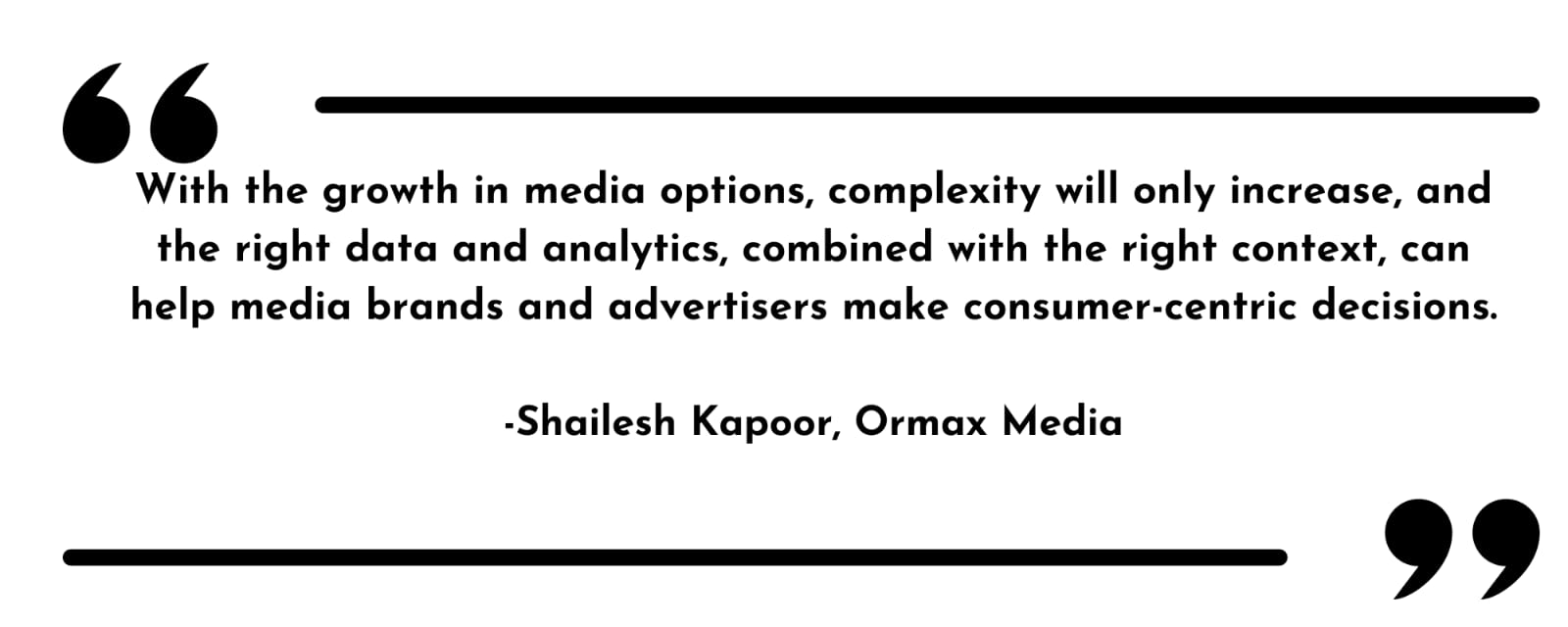
Are there any emerging or concerning trends you see in the future? How are you preparing yourself?
A definite trend that’s emerging is that the lines between different media are getting blurred. Today, Reels on Instagram are competing with long-format content like web series, for example. Yet, each medium and content type has its unique experience, making it relevant to its audience. A lot of our work post-pandemic is about understanding the nuances of media intersection. We do not buy into binary narratives, e.g., TV vs. OTT, OTT vs. theatres. Instead, our effort is to understand media intersection in the right context. For example, media choices of digital vs. TV for IPL will operate in a very different context compared to the audience’s decision to watch a new film in the theatre vs. OTT. With the growth in media options, complexity will only increase, and the right data and analytics, combined with the right context, can help media brands and advertisers make consumer-centric decisions.
Virtual Product Placement: The Newest Upstart in TV. Find Out How!
Traditional media’s ad rates are dropping, and the companies that create the fiction that millions of people read every day must come up with a new business plan. Every major broadcaster has launched an on-demand service, contributing to the growing trend of subscription services. Thus, video streaming services with advertising are set to replace traditional networks. The way brands are integrated into digital content is being revolutionized by virtual product placement. With the help of AI-driven technology, marketers can effectively and versatilely engage with their target audience. It’s critical to watch where virtual product placement takes the advertising industry, as studies reveal that consumers prefer in-content advertising 7 times over traditional ad formats. But for many, it remains shrouded in mystery, so let’s explore some insights into the trend.
What is Virtual Product Placement?
Marketers are always looking for new and creative ways to promote their brands and products in the digital world of today. Virtual Product Placement (VPP) is one such technology that has become quite popular. Using AI technology, VPP dynamically inserts a brand into digital content, such as products, signage, or videos. It gives marketers an adaptable, flexible, and powerful tool for establishing a connection with their intended audience. Placements are added to content after it has been produced, allowing for the insertion of various brands based on the audience, channel, and timing of the piece.
Most importantly, VPPs don’t appear in a disruptive way; instead, they organically fit into selected content. With this innovative strategy, brands can easily incorporate their goods into digital content, opening up new avenues for successful advertising. Because virtual product placement has the potential to monetize both new and archived content, it is causing quite a stir in the industry. Because of its adaptability, it can be used for a wide range of content formats, such as music, influencer content, SVOD/AVOD, television, and streaming services.
Inserting brands in post-production in VPP
Digital brand integration into videos has a number of clear benefits. It can be far more flexible and less expensive than handling each product by hand. At a time when viewers are adamantly rejecting commercials and other disruptions to their video binges, it might offer an extra source of income. TV branding opportunities could eventually resemble web advertising with real-time bidding for placements and precise targeting as technology advances.
Traditional product placement
For many years, there has been traditional product placement. Think about the numerous appearances of Aston Martin in classic James Bond movies. As background elements, narrative devices, or even billboard and magazine advertisements, brands are increasingly appearing on TV and film sets. Spending on product placement appears to be increasing yearly, and this strategy is still very popular. In actuality, the anticipated growth in 2022 is 14% higher than the previous year. TV continues to be the preferred medium for this kind of advertising despite the expansion of digital media; in 2021, about $2 billion will be invested in TV.
Challenges of traditional product placement
Traditional product placement presents a number of difficulties, such as being difficult to implement, hard to agree upon, and permanent once it’s been filmed. Production of content requires several months before it is aired or published, so traditional product placement is more of a long-term arrangement than a flexible one.
Read More: Developers Can Publish Instant Games Directly To Facebook At Any Development Stage
Origin of VPP
Virtual product placement allows for the smooth integration of goods into previously created content. This gives advertisers quick, adaptable, and scalable access to already-produced content. Additionally, this gives content producers the freedom to explore new revenue opportunities without having to sacrifice their production schedules or make advance commitments to brand partnerships. Rather, they can concentrate on telling t
heir story and using virtual product placement to include subtle, unobtrusive ads.
Benefits of Virtual Product Placement
Viewer Attention, Flexibility, and Simplicity
A further factor in the significance of virtual product placement in today’s media environment is the evolution of viewer attitudes and behaviors. Creating a positive user experience is the main goal. Viewers of traditional TV are dwindling. Naturally, viewers gravitate toward media platforms that provide more user choice and freedom along with minimal or nonexistent intrusive advertising. While only 12% of consumers said they enjoyed traditional TV advertisements, a remarkable 79% of consumers responded favorably to VPP, according to Kantar research.
Virtual product placement is easier to use and more adaptable than traditional methods. Brands may quickly modify their placements to correspond to particular interests, demographics, and content themes. Because of its adaptability, targeted advertising can effectively reach its target market. Furthermore, virtual product placements fit in perfectly with the selected content, enhancing the viewer’s experience without interfering.
Seizing new advertising opportunities
Virtual product placement is preferred by viewers. In-content advertisements are also shown to be more memorable than traditional TV commercials. Through virtual product placement, advertisers can increase their audience reach and level of engagement. Products can be strategically positioned within well-liked digital content to give brands greater exposure and association with well-known figures or popular shows. With this strategy, brands can improve their own brand awareness and image by taking advantage of the popularity and audience loyalty that digital content already enjoys. When compared to other advertising formats, virtual product placement shows impressive results in terms of ad awareness, brand awareness, favorability, and consideration, according to research from Kantar.
Virtual product placement creates a real impact
On the other hand, virtual product placement reaches viewers when they are deeply engaged with the content they have selected, whereas many people ignore or skip ad breaks. Virtual product placement has the power to connect products and brands with slow-moving characters or compelling narratives that resonate strongly with their target market, influencing their purchasing decisions. There is no danger of virtual product placement occurring too frequently because they are relevant to the media content and do not interfere with the story. For example, it doesn’t feel excessive to feature a cereal brand in every kitchen scene or a makeup brand in every bedroom shot. Viewers can thus see repeated product shots and maintain a positive brand sentiment.
Read More: Meta Announces Five New Lead Generation, AI-Powered Tools for FB, IG
Driving Brand Integration and Consumer Engagement
VPP’s smooth integration strengthens the bonds between consumers and brands. Marketers can create an immersive experience that improves brand recall and recognition by matching products with pertinent content. Digital content that subtly incorporates products fosters a natural association. It increases the likelihood that viewers will interact with and remember the brand. This type of advertising uses visual cues and storytelling to capture viewers and encourage meaningful brand interactions.
Measuring success and ROI
Measuring the effectiveness and return on investment (ROI) of VPP is critical, just like with any marketing campaign. Marketers are able to assess the effectiveness of virtual product placements in terms of reach, engagement, and conversion metrics. They can utilize sophisticated analytics and tracking tools. The utilization of data-driven methodology facilitates the ongoing enhancement and improvement of virtual product placement tactics, guaranteeing optimal efficacy and return on investment.
Drawbacks to virtual product placement
Integration and authenticity
It is imperative to ensure that virtual products are seamlessly integrated into the content while maintaining authenticity. The audience’s opinion may be negatively impacted if the placement appears forced or out of place. Striking a balance between advertising goals and upholding authenticity can be facilitated by collaboration between content producers and advertisers.
Evolving technology and trends
Trends in media consumption and quickly advancing technology have an impact on virtual product placement. Keeping abreast of new platforms, technologies, and formats is essential to making the most of virtual product placement. Furthermore, it guarantees long-term success by routinely evaluating and modifying strategies to conform to changing trends.
Amazon’s Virtual Product Placement
Amazon tested a novel approach to allow brands to run advertisements on its original programming. Reacher, Jack Ryan from Tom Clancy, Leverage: Redemption, and other television series were among the first to take part in Amazon’s Virtual Product Placement beta program. The company’s new CGI-powered product placement technology produced promising results. In the Amazon series Bosch, the bag of M&Ms was digitally added to a bowl on a table.
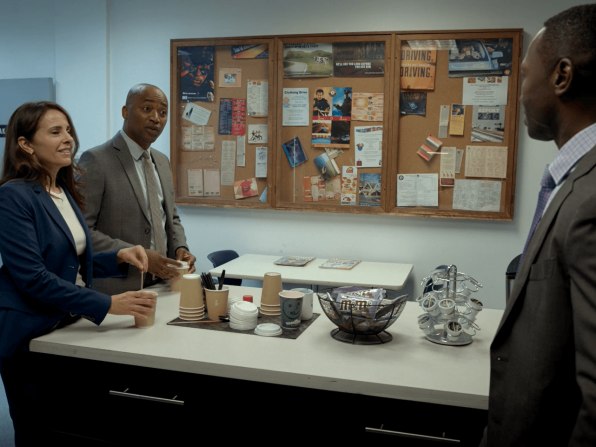
Image credit- Fast Company
Peacock TV
A digitally inserted advertising strategy was also announced by Peacock. The purpose of the new in-scene advertisements is to increase commercial opportunities by seamlessly integrating messaging and/or products with content during post-production to place ads during customer-relevant scenes.
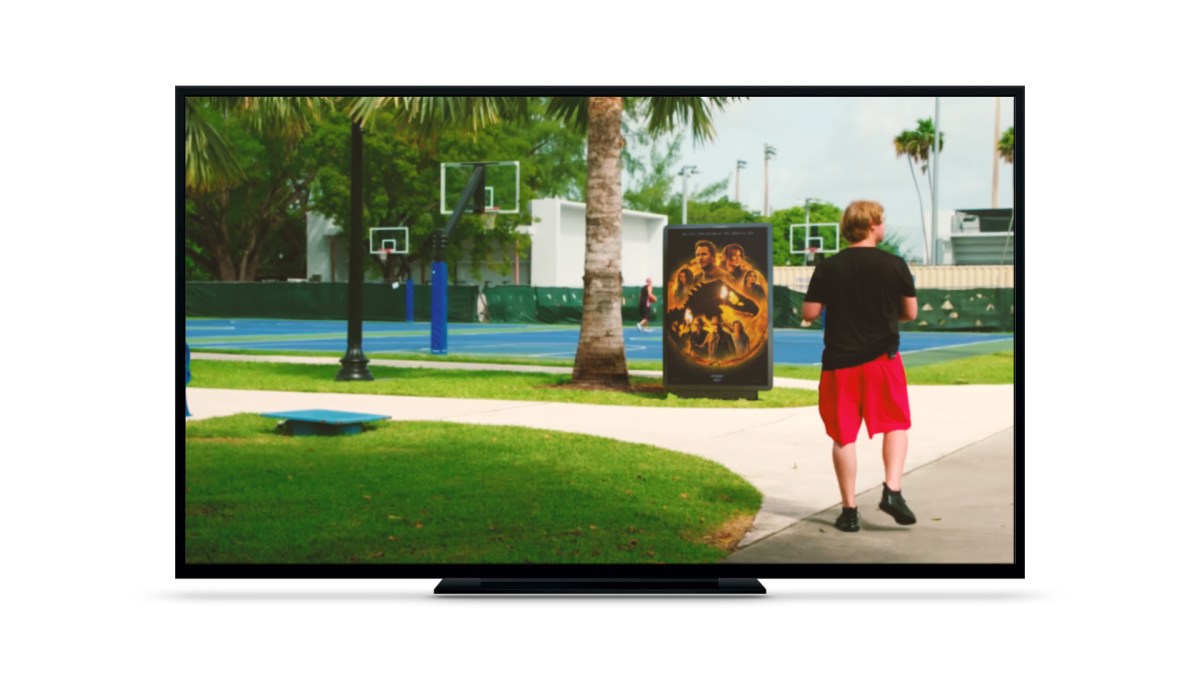
Image credit- TechCrunch
Final words
VPP promotes consumer engagement, improves brand integration, and creates new avenues for advertising. Virtual product placement will definitely become more and more important in marketing as the digital landscape develops. Furthermore, it appears that the technological foundation of VPP is already remarkably strong. This is based on the swift rise of a few highly inventive experts. Without a doubt, content owners will be searching for new ways to generate revenue. It is possibly more so than at any other point since the start of digitalization, in a fragmented media landscape where generational shifts present a particularly big challenge.
Read More: Indian Gaming Firms are Eyeing the Brazilian Market. Explore Why!
GroupM and Amazon Ads Partner for Creator-Led Shoppable Format
GroupM, the media investment division of WPP launched a global partnership with Amazon Ads. As a result of the collaboration, Amazon’s clientele will have access to novel ad formats created for creator-led shoppable content. The partnership enables GroupM clients to use customized formats to promote creative content within the Amazon DSP and in Amazon-sponsored brand placements. The Goat Agency, the influencer marketing specialist that WPP obtained earlier in 2023 designed the initiative.
Bespoke Features of the creator-led shoppable content
Only GroupM clients can access the solution through Goat. With audiences on Amazon.com, the relationship enables advertisers to better generate commercial outcomes. Important characteristics of these unique bespoke formats include:
DSP Amplification Off-site
The Goat Agency’s exclusive creator ad format will be available throughout the Amazon DSP both onsite and offsite, linking content and advertising possibilities in retail media. It has been improved by Amazon’s extensive analytics.
Sponsored Brands Integration
Exclusive to GroupM and Goat customers, Sponsored Brands, an above-the-fold Amazon.com Ad placement, will now incorporate creator-led shoppable content created by The Goat Agency. The ad experience extends the path onsite with the same influencer-led content driving greater engagement and revenue for brands, complementing Amazon DSP off-site amplification.
Enhanced Programmatic Creative Optimization
The Goat Agency’s unique creative will be cyclically informed by insights from campaigns used with Amazon Ads to improve audience targeting. Clients will benefit from enhanced commercial results by matching creator content with the audiences most inclined to make purchases by genre of content across both display and video media. This is thanks to Goat’s experience and Amazon Ads Audience Targeting.
Inspiration for Brand Pages
By uploading creator material to Product Pages and Brand Stores, Amazon could potentially increase conversion rates and transform Brand Pages into destinations for consumer inspiration.
Read More: GroupM Nexus Launches Innovative Marketing Solutions in Malaysia
Here’s what they said
Samantha Bukowski, Global Head of Commerce, GroupM Nexus said,
The development of this new capability is an important step we’re taking to better connect the creativity and engagement of creator marketing with the scale and sophistication of GroupM Nexus’s commerce capabilities. We’re excited to continue this collaboration with Amazon to further integrate inspirational content in commerce advertising in ways that deliver value for clients and Amazon’s consumers.
Amy Armstrong, Director of Global Customer Development Amazon Ads added,
We are excited to see how GroupM leverages this new ability to deliver creator content directly in the shopping experience and the benefit it will have for our mutual customers. GroupM is a valued customer of Amazon Ads, and we look forward to collaborating with them on innovative projects like this in the future.
Dafydd Woodward, Global Chief Operating Officer, The Goat Agency stated,
Beyond our proprietary style of content, one of Goat’s most significant points of differentiation is the ability to deliver high-rigor performance and guaranteed outcomes to clients through creator marketing. Our collaboration with Amazon Ads is a natural fit that is already delivering performance improvements on client campaigns across multiple markets.
Nilam Atodaria, Global Product Director at The Goat Agency commented,
Teaming up with Amazon Ads creates valuable opportunities for clients looking to activate creator-led campaigns in a performance-centric way. This collaboration allows us to deliver greater value for our clients by deploying more engaging and intelligent campaigns that drive measurable business outcomes. This unique combination brings an alternative version of Social Commerce, one which puts consumers and their shopping habits at the heart of product development.
About The Goat Agency
The Goat Agency (Goat), a global award-winning agency has been a part of GroupM Nexus since 2023. It delivers specialist content to niche audiences at scale. The business collaborates with top companies to use influencers as a performance media channel to promote digital transformation and competitive advantage. Goat has worked with, kept, and scaled some of the most interesting companies in the world since 2015, delivering social media and influencer campaigns in over 70 countries and 28 languages. Presently, Goat employs more than 350 people who operate in 35 different local markets, disseminating influencer content through all media platforms, executing industry-leading awareness and consideration campaigns, and generating sales for customers.
Read More: GroupM and Criteo Pilot Omnichannel Commerce Boost in APAC
McCann Content Studios Unites Social and Creator Capabilities
McCann has announced McCann Content Studios. It intends to offer businesses worldwide the capability of integrated social commerce, influencer marketing, and social media marketing. This new studio will include performance monitoring, audience development, creator relationships, and creative services. It will include comprehensive social and creator strategy and execution in a single organization. It will help streamline the process for customers working on social and creator-led campaigns. The network’s social and influencer strategy skills, as well as those for social creative ideation and content creation, social audience, connection tactics, and activation, influencer content co-creation and production, performance measurement, and optimization, will all be housed at McCann Content Studios. The addition of expertise from ITB and McCann LIVE should help the unit get off to a solid start.
McCann Content Studios
McCann Content Studios will implement the innovative influencer agency ITB from IPG. It was established in 2006 and has offices in London, New York, and Los Angeles. For clients like Unilever and Mastercard, the agency has a proven track record of success in leveraging influencers to promote brand platforms. The studio will also incorporate the global social practice, McCann LIVE. It has influenced the social policy of businesses like Converse in the US and Aldi in the UK.
As the distinctions between social media and the creator economy become more hazy, the new content studio is positioned as a full-service provider. The expected expenditure on influencer marketing would increase 3.5 times faster than spending on traditional social media ads. The ongoing Hollywood strikes may also encourage more creators to look for endorsement deals when productions come to a standstill. Customers, however, continue to rely on creative and engagement trends generated from popular Gen Z apps such as TikTok.
Read More: Red Havas ME Launches Influencer Marketing Initiative “SWAY”
The new unit leadership
The agency has chosen Amit Sutha to lead McCann Content Studios as president and global chief client officer. He will report to Daryl Lee (CEO). Sutha has had a global career spanning continents. Most recently, he served as Global Chief Client Officer and Global President of Performance & Campaign Content at Mediabrands Content Studios. Sutha has built both creative and media firms into leadership positions in their industry. His work at Mediabrands, which combined the best in media, storytelling, talent, data, and collaboration, significantly changed the concept of creative media content.
McCann and McCann Content Studio have promoted Monica Tailor, formerly the Global Director of McCann LIVE, to Chief Social Marketing Officer. Under Tailor’s direction, McCann LIVE swiftly established itself as an essential component of McCann’s core client offering, fusing brands with culture in exciting and unique ways. She developed a brand voice and brand storytelling that maximized social attention and conversions, assisting McCann’s integrated Aldi team in becoming internationally known.
Crystal Malachias, who was previously SVP of Global Growth & Innovation at ITB, has been named Global Head of Influencer at McCann Content Studios. She has extensive experience in influencer marketing and has worked with Hearst, and Say Media, and helped launch Refinery29 in the UK.
Here’s what they said
McCann global CEO Daryl Lee said in a statement,
Brands are increasingly interacting today in social communities in dialogue with fans, creators, and influencers. McCann Content Studios will provide our clients with a way to participate in the creator economy and co-create with them without losing their brand’s unique perspective and social voice, getting the best of both worlds.
He further added,
We have some of the industry’s very best leading McCann Content Studios. Amit is a content entrepreneur with a proven track record of commercial success. Monica is a pioneer of brand-driven social marketing for some of the world’s most socially impactful brands. Crystal is a trailblazing influencer marketing talent who understands the power of creators to shape culture and advocate for brands. Together, they represent a powerhouse of expertise that will help guide brands to new frontiers of co-creativity
Read more: 10 Game-Changing AI Tools for Digital Marketing in 2023
Kofluence Unveils Kofinity, An Assured Path to Brand Partnerships
Prominent AI-led platform, Kofluence, has debuted Kofinity, its newest offering. It serves as a forum for emerging artists to collaborate with businesses. Every content creator who uses the product has the chance to earn money from their social impact thanks to brand partnerships. According to Kofluence, with the introduction of Kofinity, creators can concentrate completely on producing content and increasing brand visibility. Additionally, it will give creators the tools to monetize their passion.
Kofluence has executed over 1600 campaigns effectively across 30 verticals. They also claim to have 550k collaborators on board and a reach of over 6 billion people. Without a doubt, Kofluence is the pioneer in influencer marketing tools.
Kofinity for Creators
Kofinity gives creators a chance to develop business relationships with brand partnerships and earn profit. Through the website ‘kofluence.com/in‘, which will act as the main interface for these deals, the product enables consumers to get a free, distinctive URL. By partnering with brands, creators may profit from every purchase made through their unique link. Through social and messaging channels, users can share offers and promotions from brands with their followers. ‘Always-on’ campaigns allow creators and businesses to collaborate. Additionally, the business guarantees earnings on any purchases made using the customized link.
Kofluence further states that top performers on Kofinity can make more than INR 25,000 every week. Guaranteed selection for collaborations with minimal content development and no prior content review comes along with that. Getting premium offers typically involves meeting eligibility requirements or considering costs. Kofinity, however, enables content producers to communicate these offers to their audience. They can therefore readily and freely use them without meeting any such requirements.
Here’s what they said
Speaking about the launch Ritesh Ujjwal, CEO and co-founder, Kofluence said,
We’re thrilled to introduce Kofinity! With this launch, we’re confident that Kofluence is well-positioned to lead the charge in this rapidly evolving industry. We aim to foster India’s thriving creators economy by monetizing 100k influencers in the next 12 months, enabling creators on their journey to becoming creator-preneurs.
Sreeram Reddy Vanga, co-founder of Kofluence, stated,
As excited as we are about the launch, what I’m looking forward to is Kofinity being a means of self-sufficiency for all the budding creators. Kofinity is expanding its horizons beyond social media like Instagram and Youtube. Now, creators can easily share their offers and deals within their social circles through multiple social networking platforms by using their unique link.
About Kofluence
Ritesh Ujjwal and Sreeram Reddy Vanga founded Kofluence, a leading AI-driven influencer marketing platform in India. The platform’s powerful proprietary AI & ML powered platform, which lets brands and influencers generate revenue from their social influence, revolutionizes the Ad-tech sector. The company has utilized its extensive category experience to service over 400 companies across 30 industries. With the help of technology, Kofluence offers a technology-driven interconnected network where businesses and social media users may find and be found by one another, choose the partners they want to collaborate with and do so at transparent prices with no additional fees. Additionally, Kofluence provides a distinctive, feature-rich Brands App and Creators App that makes collaboration simple and allows for end-to-end campaign management.
Read More: 10 Game-Changing AI Tools for Digital Marketing in 2023
Red Havas ME Launches Influencer Marketing Initiative “SWAY”
Red Havas Middle East, the Havas Group’s public relations branch in the Middle East, has announced the beginning of SWAY, a global influencer marketing program. The information was released on all of the PR firm’s social media channels. The influencer marketing effort, which had just been introduced in the area, became global on July 17, 2023. SWAY by Red Havas is a complete solution to an influencer marketing platform. It intends to assist companies in generating effective, entertaining, and realistic brand discussions via influencers.
SWAY for Influencer Marketing
SWAY by Red Havas combines PR, social media, and experiential marketing teams to create social media-first marketing campaigns with influencers that have a real impact on the bottom line. Influencer marketing is becoming more recognized as a performance channel. This led to the creation of an international practice. Through yearly market-leading insights and patterns, in-house specialist-led creative workshops, and panels with partner talent agents, the SWAY specialists will also push the influencer agenda at an industry level. Additionally, it includes premier centers in the Middle East, Australia, Asia, Europe, and North America.
Through a five-step recommended framework from recognition through measurement, the project provides an end-to-end solution for influencer marketing.
- A roadmap for a strategic cadence with a focus on genuine, long-lasting connections.
- Defined channel roles across all social media outlets.
- Provide guidance and brand reputation management for novel and developing technology trends.
- Close interactions with industry partners, and access to the best data and social media technologies.
- Tailored proxy metrics for thorough campaign assessment and reporting.
Read More: Havas Invests in Uncommon Studios in A Bold Pledge to Creativity
Here’s what they said
James Wright, global CEO of the Red Havas Group, and global chairman of the Havas PR Global Collective said in the announcement,
More brands than ever before are adapting their broader strategy and communications to include significant influencer activity. Some even put influencer marketing front and center, recognizing it as a full-funnel marketing channel. It’s no longer just a paid transaction. Brands are building long-term relationships with influencers who advocate their messages and experiences.
He continued by saying that the Red Havas Group has worked in this area for years. The next logical step would be to explicitly focus on this as a worldwide practice as they are now working with more than 100 businesses and organizations on their influencer activities.
Dana Tahir, Managing Director, Red Havas Middle East added,
SWAY empowers us to leverage the technical prowess of the Red Havas network, combined with deep local understanding, to guarantee unparalleled influencer campaigns to our clients, both at a regional and worldwide scale. The role of influencers, particularly in the Middle East, holds paramount significance as they hold the ability to bridge connections and foster authentic engagement, establishing a profound impact on the audiences they reach.
Read More: Mastering Digital Marketing: Insights from Kosal Malladi, VP at Madison Loop
Lemon8, TikTok’s sister app struggles in the US, users cite inorganic feel and influencer bias
Lemon8, the sister app of TikTok by ByteDance started off positively. Thanks to TikTok’s reach and success in the international market, it became widely popular. But like every new app launched, Lemon8 too has become saturated for a very good reason. While U.S. lawmakers were debating on a ban on TikTok earlier this year, parent company ByteDance was quietly preparing the launch of its social media app Lemon8.
TikTokers were excited about the latest platform, and the app downloads skyrocketed placing the app at #2 in the App Store in the U.S. Before we dive into what issues that app is facing, here is a brief description of Lemon8 for those who have never heard of it.
Lemon8, what is it?
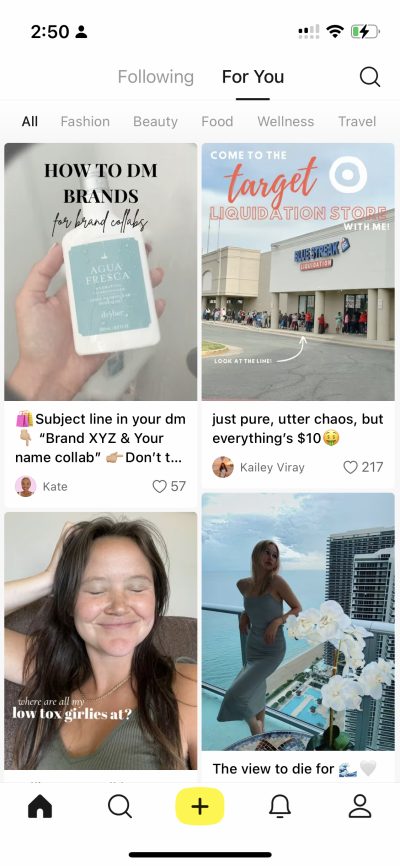
Image credit- Rest of World
Lemon8 is a social media platform, best known for fusing Instagram and Pinterest. A lifestyle-based app, it allows content creators to share photos and videos curated around a specific topic. Initially launched in Japan in 2020, it quickly gained traction before reaching its peak popularity in the western markets three years later. The app features a main side-by-side vertical feed where users can post images and videos and decorate them with in-app templates. The platform broke the barriers between audiences and influencers with its feature that allowed creators to tag their posts with product details, links, and price breakdowns.
Specifically designed with the younger Gen Z audience in mind, the app is more about aesthetics and DIY tips, unlike other social media spaces. Food, wellness, fashion, beauty, home, travel, and productivity are the seven content categories. Under each topic, one can find recommendations, video tutorials, and perfectly crafted content that appeals to the eye.
But as the initial hype died down, like any other newly launched application, users faced problems with the app. Lemon8’s popularity tanked and since then, its DAUs have nearly halved from 11,930 to 6,360.
Users say Lemon8’s algorithm lacks the magic of its sister app TikTok: “I mostly get bible content from religious people and weight loss tips, and I’m not interested in either of those”https://t.co/GlSBCKlS1k
— Rest of World (@restofworld) July 19, 2023
Aesthetically curated or just a gimmick?
Lemon8, launched as a follow-up app for TikTok, flopped in the U.S. Users complain that the app is too pretty and well-curated to the point of feeling fake. Here are some problems users feel need to be addressed
- The app feels inorganic and well-manicured
- It focuses more on influencers’ needs rather than ordinary users
- Feed crafted to blandness
- Feels like an app created for creators, by creators
- Ordinary users feel left out
- Algorithm lacks gauging user preferences and keeps showing recommendations that users were not interested in.
- App does not support sharing external links, making it difficult to build a brand on social media.
- Everything was well presented and well-crafted when users refreshed their feed
- Users complained of declining engagement
The app sets unrealistic standards and idealizes lifestyles. One user commented that the app reminded her of Pinterest in its early days when it was just “white girls” who posted about their lifestyles. The app is filled with topics like “The time I realized skinny privilege is real”, “Hot Girl Lunch Ideas” and more.
Another user pointed out that niche topics like dark academia, or cottagecore did not gain as much traction as conventional topics did. The user also mentioned that the app did not feel ready to have a real-world conversation. Lemon8 is also recruiting lifestyle influencers to collaborate with them on a paid partnership. In return, the creators are promised exposure and guidance. One of the ads posted by the platform stated that they were looking for “U.S. based women aged 18-25, and had an ‘It Girl’ aesthetic with a background in creating ‘high quality’ beauty and fashion content.
A Chinese app rip off?
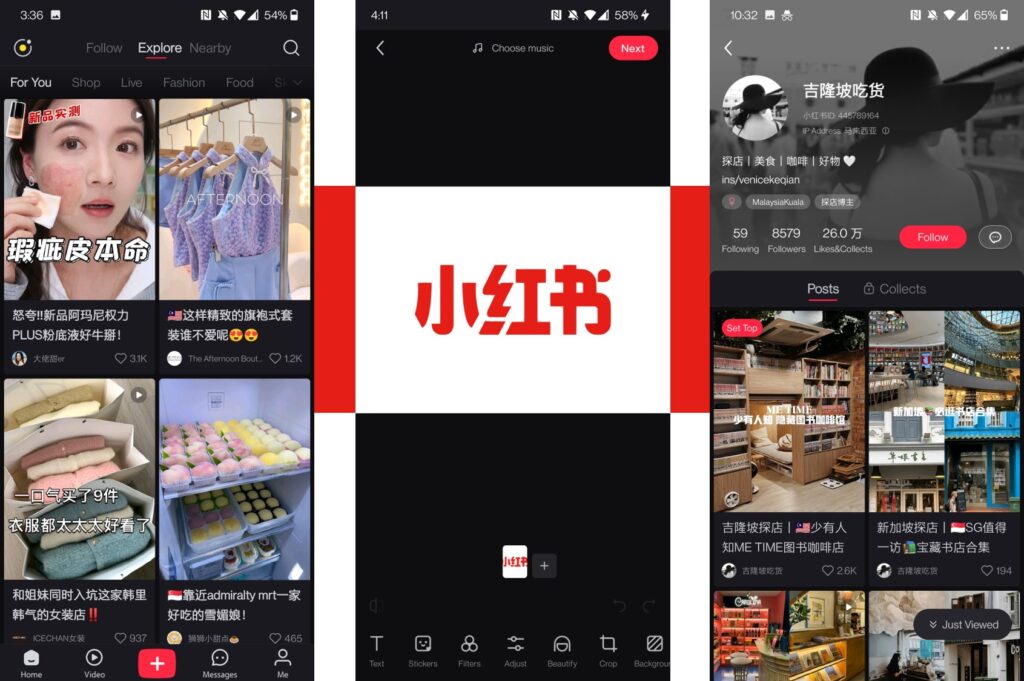
Image Credit- First Com Academy
Lemon8 is a replica of the Chinese social media giant and e-commerce platform called “XiaoHongShu” which literally translates to a “Little Red Book.” It has been deemed the “lifestyle bible” and hosts more than 200 million monthly active users. In simple terms, it can be described as China’s own Instagram. The platform targets women in their 20s and 30s from first and second-tier Chinese cities. Thus, women belong to affluent families with higher spending capacity. The female-to-male ratio on the app is 8:1 (88.8% of females and 11.1% of males).
Users share their lifestyles, shopping experiences, and other content in the form of photos, videos, texts, and live streams. Content can range from beauty and cosmetics to food, fashion, travel, fitness, entertainment, etc. Social features allow users to discover the latest brands. It is immensely popular among beauty and fashion brands like Chanel and Dior.
ByteDance saw the absence of such a platform on the global market as an opportunity to replicate XiaoHongShu’s domestic success. Therefore, they launched an “overseas Little Red Book” Lemon8 in the hopes of capitalizing on TikTok’s reach and success.
Our thoughts
In their optimism about imitating a widely successful app, ByteDance, and Lemon8 failed to consider the drawbacks. XiaoHongShu users also complained that the app set unrealistic standards for women’s beauty and wellness. Over in the US, its adversary faces similar problems. When one opens Lemon8, the very first thing that runs through the mind is that it is filled with clickbait-ish content, including how to lose weight in 40 days, apps to get free products from any brand, etc.
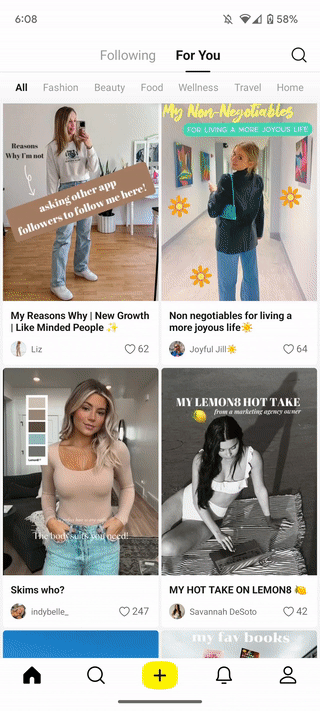
Video credit- DreamlikeDiana
In addition, the app was full of white women between the ages of 20 and 30. They promoted beauty, Christianity-related posts, and high fashion, which not many users can relate to. This in many ways contrasts with the ongoing body positivity initiative that encourages women to feel comfortable in their own skin. As there are no brands allowed on Lemon8, it is impossible to convince people to make a purchase. Despite losing active users, ByteDance is still promoting the app to increase outreach, and posting upcoming job listings as well.
Lastly, the app lacks inclusivity. Lemon8 is women-dominated with next to zero male audience. It is highly likely that Lemon8, which is also owned by a Chinese company, will be banned like TikTok.
All in all, like every new app, Lemon8 too has had its fair share of fame, is becoming less and less relevant to its audience. It has come to this point also because the platform has not taken any plausible action to convert targets into users. The app feels like a space with pretty content, but not relatable. Users have mentioned giving it a try again, if and only if the platform brings changes to make it more than what it already is.
What do you think is the future of this obsolete social media app?
Read More: TikTok Gets More Visual, Launches ‘Interactive Add Ons’ For In-Feed Ads
Mastering Digital Marketing: Insights from Kosal Malladi, VP at Madison Loop
Kosal Malladi, the accomplished Vice President of Madison Loop, is renowned for his expertise in digital marketing and media planning. With a rich background in the industry, he has made remarkable contributions, working with diverse clients in sectors like Auto, BFSI, Entertainment, Social, and FMCG. His extensive experience spans both agency and client sides, providing unique insights into data-driven marketing, influencer collaboration, social media management, and the exciting future of the digital marketing landscape.
In this exclusive interview, we explore his vision, leadership, and the exciting journey that led him to the forefront of digital marketing innovation.
Can you provide an overview of your experience and background in the field of digital marketing and media planning?
My interest in digital marketing started during my MBA. Google held a competition where they provided INR 1000 vouchers to each team and tasked them with setting up Google AdWords campaigns. This experience sparked my interest in digital marketing, and I further developed my skills during an internship at ESPNStar, where I implemented what I had learned.
I began my career in Digital Media Planning with Media2Win, where I gained valuable experience and eventually took on leadership roles in managing digital mandates for clients such as Mondelez and Asian Paints, among many others. This field is constantly evolving, and I find it exciting to continually learn and adapt to new trends and strategies.
In your opinion, how has the intersection of data and technology transformed the landscape of digital marketing and media planning? What opportunities and challenges does this convergence present?
The biggest challenge for digital marketing is data, whether it’s too much or too little. Initially, the focus shifted towards tracking leads/sales, neglecting brand building. Short-term gains became more tempting than long-term benefits. However, with increased spending, the demand for accountability has grown. Technology allows us to analyze data and derive actionable solutions from it. Nonetheless, the absence of a universally accepted authority like Broadcast Audience Research Council (BARC) poses a challenge for digital marketing. Until then, disputes will persist. The ultimate solution lies in digital marketing delivering positive business outcomes, which we are witnessing today.
What initially attracted you to lead the digital creative unit ‘Madison Loop’?
Media is only a part of digital marketing; creative aspects are equally important in driving positive business metrics. I have noticed a tendency for media and creative teams to blame each other when campaigns fail. Creative individuals often lack a grasp of numbers, while media professionals may struggle with creativity. Madison Loop was founded to bridge this gap between media and creative, symbolized by its name. At Madison Loop, we strive to complete the business loop and achieve results.
How do you approach social media management to effectively engage audiences and drive brand awareness?
Social media thrives on authenticity, but that doesn’t mean you can’t promote your brand. It’s important to be transparent about your intentions when selling. The key is to create authentic content and tap into the latest trends and fads. If you have to choose between posting high-quality content infrequently or good content regularly, opt for the latter. Consistent posting increases the chances of gaining traction. However, it’s important to note that there’s no guarantee of virality. Focus on regularly sharing good content, and something is likely to gain momentum—whether it’s tomorrow, a week later, or even a month later.
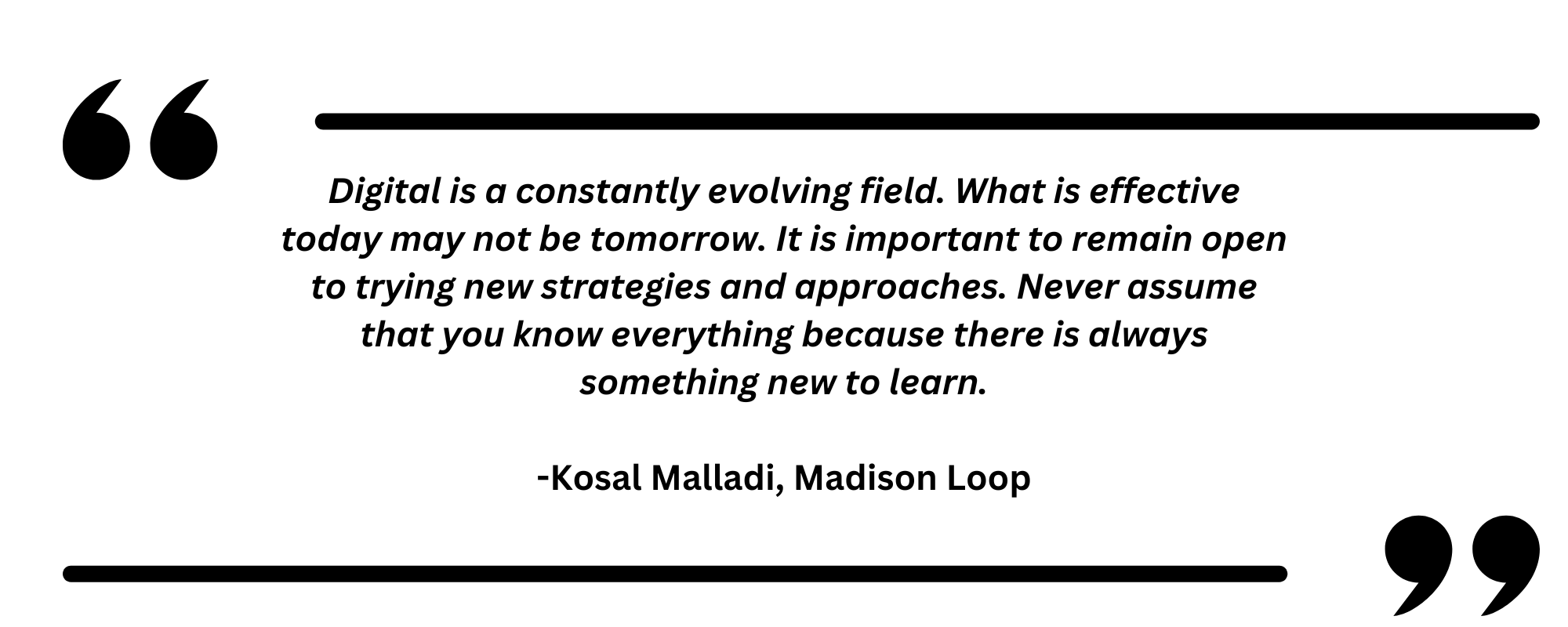
Would you like to share a successful social media campaign you managed on a specific platform like Instagram, LinkedIn, or Twitter, and explain how you tailored the content and engagement to match the platform’s unique characteristics?
For content to gain traction on social media, a hook is essential. Social trends often have a hook step, sound, or movement that captures attention. Dance steps, for instance, can go viral due to a catchy hook step. We have successfully utilized this principle numerous times. A recent example is Vicco’s campaign featuring Alia Bhatt, where she performed a unique action of showing her teeth to the dentist while making the sound “eeeeee.” We capitalized on this hook by collaborating with influencers who created their own versions of the hook. This strategy gained momentum, with millions of others joining in with their own “eeeeeeee.”
How do you effectively identify and collaborate with influencers, considering factors such as authenticity, engagement levels, and suitability for your client’s target audience in influencer marketing?
Today, the beauty of influencer marketing lies in the fact that anyone can become an influencer. This opens opportunities for brands to collaborate with everyday individuals and share their brand stories on a larger scale. However, precautions need to be taken.
At Madison Loop, we have implemented tools that help us identify influencers based on factors such as their location, topics of interest, demographics, and follower base. Additionally, we have an authenticity scoring system that considers factors like follower growth/fall, follower location, and more. These measures enable us to ensure the credibility of the influencers we work with.
Can you share your perspective on the future of digital marketing and media planning? What emerging technologies or trends do you believe will have a significant impact on the industry in the coming years?
In the past, digital planning was done blindly, but we have evolved to utilize available or claimed data for our plans. Over the years, data analysis and automation have played a crucial role in optimizing the process. The future will revolve around AI, driven by data analysis and automation. AI has already made significant strides and will continue to advance.
Some express fear about AI, believing it will replace their jobs. However, I believe it is not AI itself, but rather people who possess the knowledge of how to use AI effectively, who will take away those jobs. Human intervention will always be necessary in this field, although the nature of that intervention will evolve.
Can you share a valuable lesson or piece of advice that you have learned throughout your career in digital marketing and media planning?
Digital is a constantly evolving field. What is effective today may not be tomorrow. It is important to remain open to trying new strategies and approaches. Never assume that you know everything because there is always something new to learn.
How do you manage the pressure and demands that come with leading a digital creative unit, and how do you maintain a healthy work-life balance?
Finding a balance between work and personal life is essential. While work may seem never-ending, it’s crucial to establish a predefined end time for the day. Once you embrace this concept, achieving a balance becomes more natural. Personally, I find that prioritizing my personal time enhances my focus on work, allowing both aspects to thrive separately.
Mindshare and HUL shine at Impact Digital Influencer Awards
Exchange4media unveils the winners of the second edition of Impact Digital Influencer Awards held in Mumbai, India. This award recognizes brands, agencies, and individuals who have produced great influencer-driven content. In the world of Digital Marketing, influencer marketing has become increasingly important and has gained momentum. The INCA-e4m Influencer Marketing Report 2022 estimates the influencer market to be valued presently at Rs 1275 crore and gross 2800 crore by 2026 with a CAGR of 25%.
Mindshare bagged the honor of ‘Agency of the Year’ and Hindustan Unilever Limited (HUL) was named ‘Brand of the Year’.
Mindshare wins also included 17 gold metals for its Boost campaign #GameStaminaKa – Breaking Gender Barriers in Gaming in the Best FMCG Campaign category. Continuing the gold winning spree, the agency won for ‘Making the In The Making’ campaign for Instagram, the Best Platform – Specific Content Campaign category. Another bagged for PepsiCo India’s and Brooke Bond campaign under the Best Food and Beverages category. Yet another gold came for Pepsodent for HUL. The agency has also garnered silver and bronze metals
Other gold wins include:
Efficacy Worldwide – 2 gold,
Edelman India – 2 gold,
FoxyMoron – 2 gold,
INCA–GroupM -1 gold,
Interactive Avenues -3 gold
Additionally, other gold winners named were MediaCom, Kulfi Collective, Tonic Worldwide, Blitzkraig, Voxxy Media, galleri5, Alliance Advertising & Marketing Pvt. Ltd, White Rivers Media and Pivotroots.
Schbang, Wavemaker India, Hive Minds, Qyuki Digital Media, Adani Digital Labs, are a few names that won silver. The ‘Best Influencer of the Year’ award was given to Shlok Srivastava while Shlok Srivastava bagged the award for ‘Best Tech Influencer’.
Read more: The Ultimate A-Z Glossary Of Digital Advertising!
Influencer Marketing Comes Back Strong Amidst Pandemic Crisis
The pandemic had disrupted every industry forcing marketers to shift their plans and thrust into an uncertain and swiftly changing landscape. Brands are looking for independent creators than productions due to pandemic restrictions such as sheltering in place.
The industry was in troubled waters as pandemic had put a pause on all the plans, took many industries out of the market, and affected many influencers’ content. Some marketers even continued with Facebook boycotts or social media pauses.
It has been quite a challenging period for influencers. However, the influencer industry is recovering and bouncing back, showing incredible resilience and creativity. Consumers are spending more time on social media interacting with content creators after being cooped up at home. With budgeting constraints and large scale, ad production is difficult, brands are turning to independent creators for a quick, less-expensive, and easy-to-produce creative content. This is providing the much-required boost to the influencer marketing industry.
Numbers Says It All
Social Bakers released the State of Influencer Marketing Report and found out that there is a fall in sponsored content from March to May and a pivot towards micro-influencers. Yuval Ben-Itzhak, CEO, Socialbakers said,
“Nano and micro-influencers are now seen as high-value resources, bringing high impact without the big price tag of macro and mega influencers. As budgets remain tight, savvy brands will likely continue to expand partnerships with these smaller influencers as part of a smarter social media strategy in the wake of the continuing worldwide pandemic.”
Another finding by Shareablee, an audience-based social media measurement company states that branded content from influencers on Facebook, Instagram, and Twitter was up 21% in July from March despite a decline in sponsored influencers post- 87% on Instagram and 57% on Facebook in April compared to last year.

Image Credit: Adage
Influencer marketing has changed in several ways during the outbreak. There is a shift in consumer behavior more towards digital in this pandemic due to the lockdown. The engagement with branded influencers posts grew 5 times faster to 57.2 million total actions in July compared with March, according to Shareablee.
A rise in sponsored posts is seen since July after the volume fell almost 17 percent in March and another 6 percent in April reveals Data from CreatorIQ.
This proves that the industry is still very strong and influencers are quick to adapt with conversion rates increased across platforms in the pandemic. As quoted in Adage, Melissa Rosenthal, co-founder at Circle said,
“Brands took a few weeks to figure out how to position themselves for a new world. Now I’m seeing probably 5 times the outreach I was seeing pre-pandemic. Small brands, large brands, new brands, everyone.”
The pandemic is benefitting the influencers with the increase in viewership as alternate media or sports events have declined drastically. Presently, influencers are the only production houses that are open and can make new, creative, and custom content for brands amidst pandemic restrictions. According to the eMarketer report, followers are looking for more DIY activities and short videos.

Image Credit: eMarketer
Clorox Followed The Influencer Way!
Clorox.Co is getting back to sponsored influencer work after a pandemic pause. Through the Reach Agency, Clorox recently teamed up with YouTube comedians The Try Guys to market its latest scent of Fresh Step cat litter. In the video, the creators open the world’s smelliest foods to demonstrate the ability of new Fresh Step cat litter with Febreze Freshness and Gain Scent covers the odors. The video garnered nearly a million organic views on its first day on August 15. The partnership with Try Guys who have 7.3 million subscribers is Clorox’s third venture into influencer-led demo-tainment.
Clorox shifted the plan of conventional ads to influencer content while planning the campaign in March as the pandemic situation would make it hard to produce ads. Another major decision taken by the brand was to boycott Facebook and Instagram advertising for the remaining year while the project was ongoing.
As reported in Adage, Deb Crandall, director of marketing and studio lead said,
“We have had to ask our partners not to post this on their Facebook or Instagram channels, and we’re not putting any paid support behind it. It definitely takes a channel out of the mix to reach our audience, but that’s why we’re excited about the results we’re seeing. To reach almost a million views without Facebook or Instagram makes us think we’re onto something.”
Finally, brands and creators are learning to operate in the ‘ new normal ’. In the time of crisis, savvy social media influencers are engaging with their followers in a fairly two-way communication that even brands could never have on their own.

